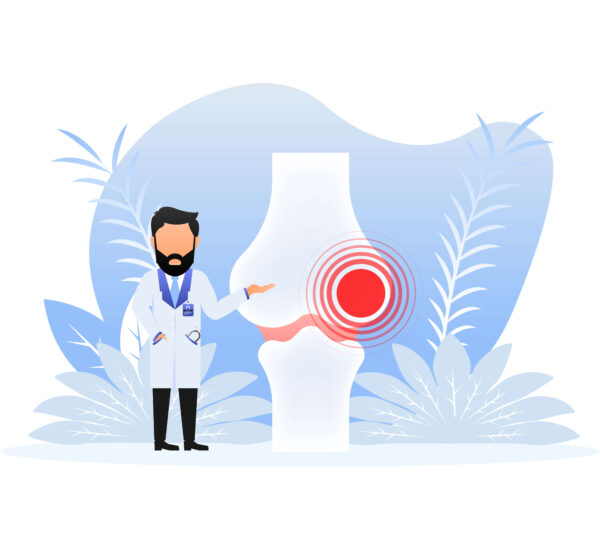Having a chronic autoimmune condition such as “rayuma” can be a challenging situation for patients. This term in Filipino is a type of arthritis that affects several individuals in different ages. Unfortunately, some patients are not familiar with it, which results in the disregarding of symptoms. In this blog, we’ll help them uncover more details about this condition, including the term origin of rayuma in English. Doing so will help certain individuals to be more aware of their health as it is one of the most debilitation illnesses. Let’s begin!
The Origin of ‘Rayuma’
The term “rayuma” is commonly used in the Philippines to refer to rheumatoid arthritis. It is a colloquial term that has become deeply ingrained in the local language and culture. While the origin of the term is not well-documented, it is believed to have derived from the Spanish word “reuma,” which means rheumatism.
Rheumatoid arthritis, rayuma in english, has been affecting individuals for centuries. Although the exact origin of the term is uncertain, it is evident that the condition has long been recognized and discussed in various cultures. The earliest recorded mentions of rheumatoid arthritis date back to ancient Egypt and Greece, where descriptions of joint pain and inflammation can be found in medical texts.
In ancient Egypt, physicians documented cases of individuals suffering from joint pain and stiffness, symptoms that are characteristic of rheumatoid arthritis. They believed that these symptoms were caused by an imbalance of bodily fluids, known as “humors,” and attempted to restore equilibrium through various treatments, including herbal remedies and massages.
Meanwhile, in ancient Greece, renowned physicians such as Hippocrates and Galen also observed and described cases of rheumatoid arthritis. They believed that the condition was caused by an excess of “black bile,” one of the four humors, and prescribed treatments such as bloodletting and purging to restore balance to the body.
Throughout history, different cultures have developed their own explanations and treatments for rheumatoid arthritis. With this line of history, it shows how essential it is to be knowledgeable to properly address conditions such as rayuma. Fortunately, it’s evident today with the skills of rheumatologists and several latest medical advancements for treating patients.
Impact of Rayuma in Health

Rayuma in english is commonly known as rheumatoid arthritis. Although, the term rayuma is widely used in the Philippines, it is essential to understand the other jargons. That way, patients will be more aware of the complex nature of this condition.
Knowing that rheumatoid arthritis is an autoimmune disease that primarily affects the joints, patients must take their condition seriously if they are diagnosed with rayuma. This condition will cause chronic inflammation and pain. It is an inflammatory condition that occurs when the immune system mistakenly attacks the body’s own tissues, including the joints.
Treatment for rheumatoid arthritis typically involves a combination of medications, physical therapy, and lifestyle modifications to manage symptoms and slow down the progression of the disease. It is important for individuals with joint pain and inflammation to consult with a healthcare professional for an accurate diagnosis and appropriate treatment plan.
Symptoms of Rheumatoid Arthritis

The symptoms of rheumatoid arthritis can vary from person to person. Rheumatoid arthritis is known for its characteristic pattern of symmetric joint involvement, meaning that it usually affects the same joints on both sides of the body.
Here are some of the most common warning signs to check out:
- joint pain
- stiffness
- swelling
- fatigue
Monitoring these symptoms are important when it comes to proper care. Through monitoring their condition, patients can take the best step towards condition management. Seeking help from a doctor can also occur for proper diagnosis and treatment plan. Online platforms such as NowServing is available for immediate online check up.
Environmental Factors Causing Rheumatoid Arthritis

Understanding the exact cause of rheumatoid arthritis, rayuma in english, is another great behavior that patients must practice. Doing so allows them to have self awareness in terms of the potential triggers around them. Thus, making it easier to identify the suitable strategy to ensure better joint health,
For instance, environmental factors, such as smoking, hormonal changes, and other factors, may trigger the onset of rheumatoid arthritis in genetically susceptible individuals. Here’s why!
Smoking
It has been identified as a significant risk factor for developing rheumatoid arthritis. It is thought that the chemicals in tobacco smoke can activate the immune system and promote inflammation in the joints.
Hormonal changes
Meanwhile, this change that occurs during pregnancy or menopause, can also influence the development of rheumatoid arthritis. Hormones such as estrogen helps maintain the functions of the joints. With the decrease of this hormone, it can affect the level of lubricant, which is crucial for preventing friction in the joints. In a way, it serves as a protective factor, which makes it a valuable aspect when learning about rayuma.
The Science Behind Rheumatoid Arthritis
Understanding the science behind rheumatoid arthritis can provide valuable insights into the mechanisms underlying the disease and potential treatment options.
The Role of the Immune System in Rheumatoid Arthritis
Rheumatoid arthritis is an autoimmune disease, which means that the immune system mistakenly attacks the body’s own tissues. In the case of rheumatoid arthritis, the immune system targets the synovium, the membrane lining the joints, causing inflammation and subsequent damage to the joints.
Current Research on Rheumatoid Arthritis
Ongoing research on rheumatoid arthritis aims to uncover the underlying mechanisms of the disease and develop more effective treatments. Scientists are investigating various aspects of the disease, including the genetic predisposition, immune system dysfunction, and potential environmental triggers. Additionally, clinical trials are being conducted to evaluate the safety and efficacy of novel therapeutic approaches.
Treatment and Management of Rheumatoid Arthritis

While there is no cure for rheumatoid arthritis, several treatment options can help manage symptoms and prevent further joint damage.
Medications for Rheumatoid Arthritis
Medications play a crucial role in the treatment of rheumatoid arthritis. Nonsteroidal anti-inflammatory drugs (NSAIDs) provide symptomatic relief by reducing pain and inflammation. Disease-modifying antirheumatic drugs (DMARDs) are prescribed to slow down the progression of the disease and prevent joint damage. In severe cases, biological therapy, which targets specific components of the immune system, may be recommended.
Lifestyle Changes for Managing Rheumatoid Arthritis
In addition to medications, making certain lifestyle modifications can help individuals manage rheumatoid arthritis effectively. Regular exercise, such as low-impact activities like swimming and walking, can improve joint flexibility and overall fitness. Maintaining a healthy diet, managing stress levels, and following a good sleep routine can also positively impact the management of rheumatoid arthritis.
Final Takeaway
Rayuma is the term commonly used in the Philippines to refer to rheumatoid arthritis. By decoding the meaning of “rayuma” and exploring the various facets of rheumatoid arthritis, individuals can gain a comprehensive understanding of this chronic condition. Thus, helping to achieve healthier conditions while managing the illness.
Be one step ahead of your joint health by ensuring a deeper understanding about rayuma. Book an online consultation with a rheumatologist near you to begin!



